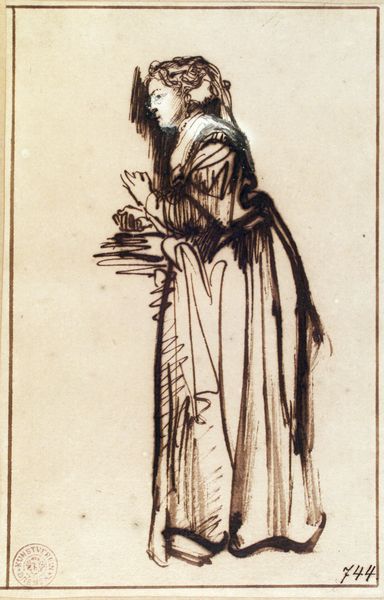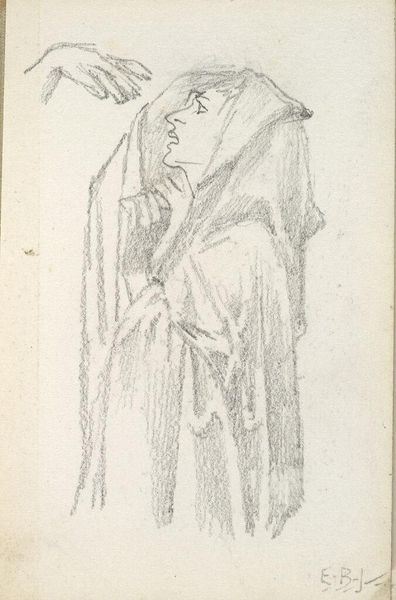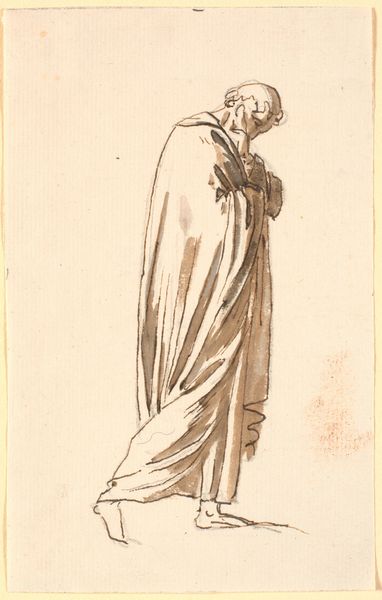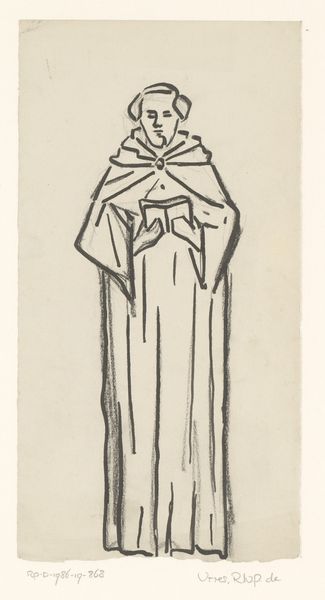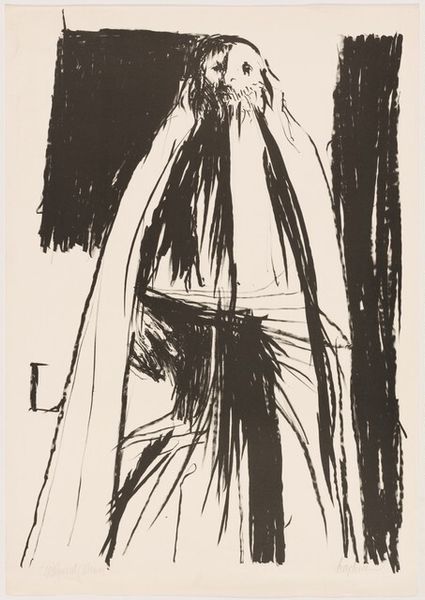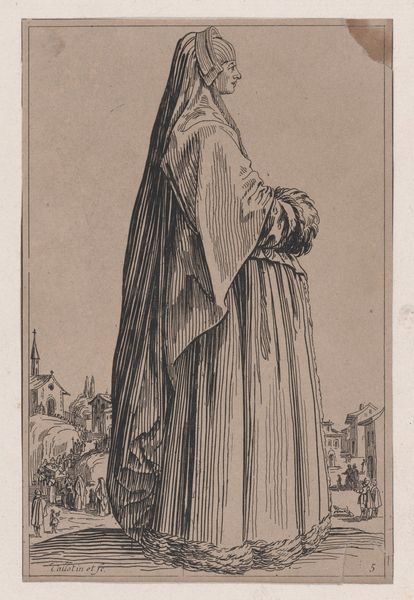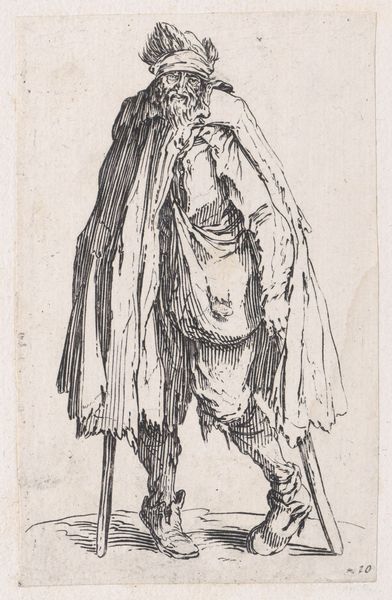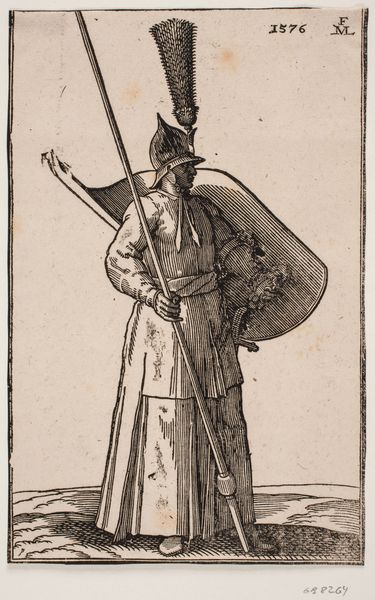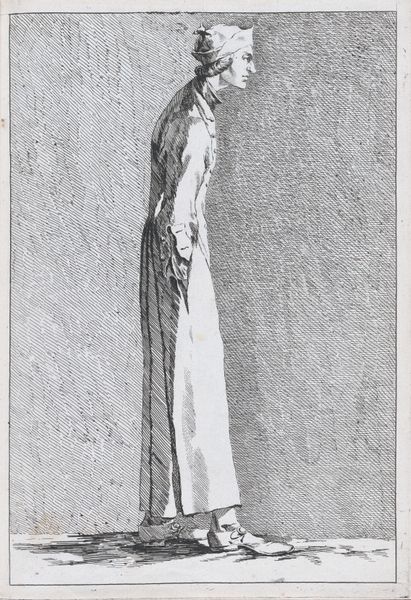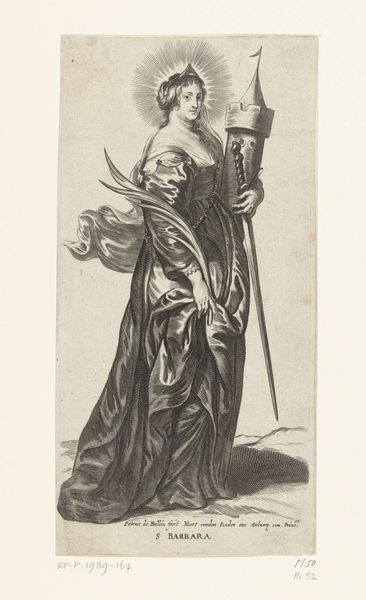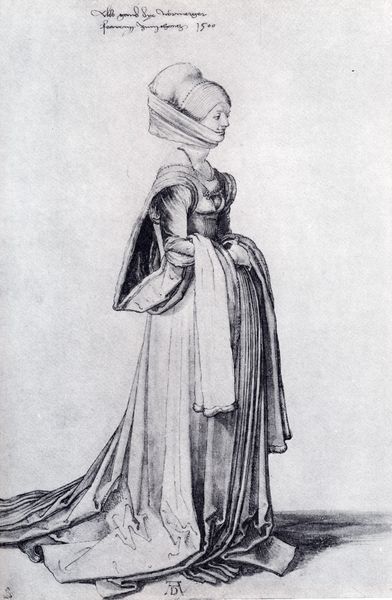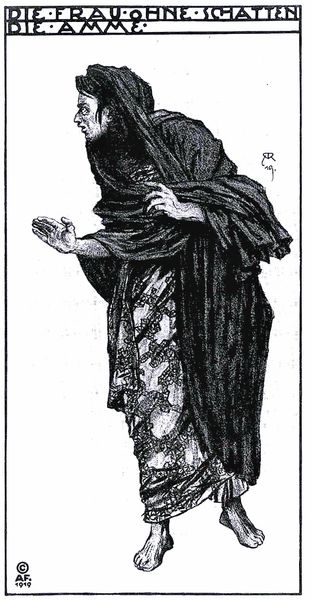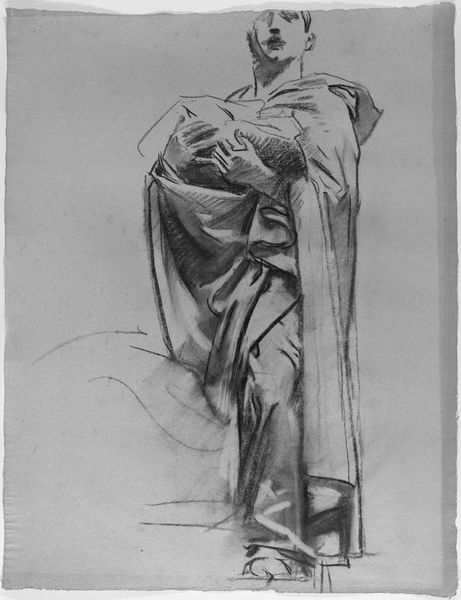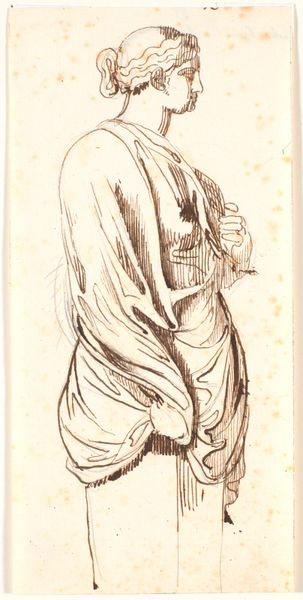
Design for Hawk Dress for Mrs. C.E. Hunter as Queen Phalema in "The Seraph" 1900
0:00
0:00
drawing, print, ink
#
portrait
#
drawing
# print
#
ancient-egyptian-art
#
figuration
#
ink
#
academic-art
Copyright: National Gallery of Art: CC0 1.0
Editor: This ink drawing from 1900 by John Singer Sargent is a costume design titled "Design for Hawk Dress for Mrs. C.E. Hunter as Queen Phalema in 'The Seraph.'" I'm immediately struck by how much it resembles ancient Egyptian imagery but filtered through a turn-of-the-century lens. What do you see when you look at it? Curator: Well, immediately I’m drawn to the materiality of the piece. Look at the stark contrast of ink on paper. This is more than just a sketch; it’s a record of Sargent's process. The deliberate strokes, the varying pressure... it all points to a system of artistic production that’s rooted in both traditional methods and a burgeoning industrialization of art. Notice how this detailed, hand-drawn design was likely intended to be reproduced. What does this tell us about the commercial aspects of theatrical production at the time? Editor: That’s interesting. I was focused on the dress itself, but you’re making me think about the larger industry. So, the act of drawing, the very materials used, speak to that commercial reality? Curator: Precisely. The choice of ink and paper—relatively inexpensive and easily reproducible materials—indicates a functionality beyond mere artistic expression. This design served a purpose; it was a blueprint, intended to be translated into a tangible garment. Consider the labor involved in crafting that hawk dress from Sargent’s design – who were the workers involved? What kind of fabrics would they have used? The drawing is just the starting point of a whole system of making. How does it reflect class distinctions? Editor: I hadn't thought about it that way at all! It shifts the focus from just admiring the aesthetic to understanding the social dynamics involved. This drawing then becomes less about Sargent and more about the collaboration, even exploitation, within the Edwardian theater scene? Curator: Exactly! It is about interrogating those power dynamics and examining the very tangible realities of artistic creation in a specific historical moment. Editor: Thanks for pointing that out. Now I see that this drawing holds much more complexity than just a pretty design. It makes me want to research who was actually making the dresses back then! Curator: Absolutely! By tracing the object’s journey through various hands and workshops, you’ll gain a deeper appreciation for the hidden narratives embedded in art.
Comments
No comments
Be the first to comment and join the conversation on the ultimate creative platform.
